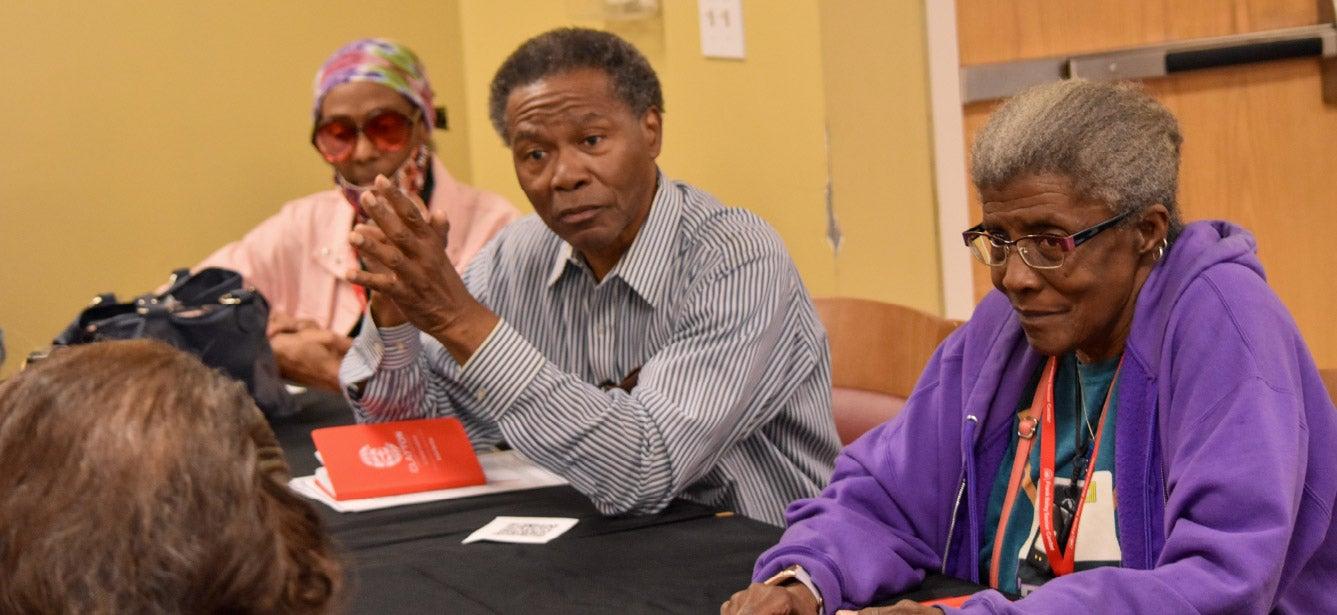
“We do not quit playing because we grow old, we grow old because we quit playing.”
—Oliver Wendell Holmes
Senior centers have developed over the past half-century from different models and missions. These multipurpose centers have evolved into places where older adults can improve or maintain many aspects of life all in one place. They not only offer meaningful activities for older adults, but they also provide an important source of referrals, keeping them connected to the community.
Yet the wide differences between centers—reflected in the common saying of, “If you’ve seen one senior center, you’ve seen one senior center”—has also created debate over what functions senior centers best perform. On the one hand, they provide services for those in need. On the other hand, they provide recreational activities for people who are healthy and economically self-sufficient.1 This has led to the questions of:
- Which services are most needed?
- Which populations should the programs focus on?
A study I conducted at a nationally accredited senior center in Florida offered a look at how participation levels and opportunities can inform us of ways to better serve older adults.
How can we best measure levels of senior center participation?
Senior center attendance can be viewed as a continuum, ranging from limited activity to intense involvement,2,3 which not only varies across individuals but for a given individual over time. The different levels of participation in my study were measured by frequency, duration, stability, and amount of activity involvement.1
- The frequency of senior center attendance refers to how often an individual attends the center.
- There are three different variables that measure duration of attendance:
1) How long the participant has been attending the center, measured in terms of months
2) How long the participatnt usually stays at the center each visit
3) how long the participant usually socializes with others at the center when not in an activity - Stability of attendance refers to changes over time in the frequency of attendance—whether the level has stayed the same, increased, or decreased.
- Amount of activity involvement refers to the number of different activities a participant is involved in at the center.
Results from the study showed a large amount of variation in the frequency, duration, stability, and amount of activity involvement at the senior center. The levels of involvement continuously change depending on the types of activities offered at the center, the availability of the participants, and what the participants want to gain from attending activities at the center.
The different levels of social involvement mean various types of people can fill their need to socialize, whether they are retired and looking for a new community, still working yet have extra time to meet people and learn new skills, or have never worked and enjoy the social camaraderie through the activities. Thus, a senior center can be an effective institution if it creates a unique space and an unordered approach to activities on a continuing basis. This allows different types of older adults to benefit, regardless of their health, economic situation, and level of involvement.
What types of information and benefits are most important to older adults?
Information on specific services that are deemed important, and benefits from attending senior centers, vary by participant. In terms of service information, the study survey asked how important it was that the senior center provided the participant with information about specific services:
- Health insurance coverage
- Where to get legal help
- Employment opportunities
- Nutritional advice
- Social services
- Transportation services
- Volunteer opportunities
- Long-term care
- Home services
The results from the survey suggest that information about health insurance coverage, where to get legal help, nutritional advice, and volunteer opportunities were most important to them. The information about employment opportunities, social services, transportation services, and home services were least important.
The different anticipated gains from attending the senior center were grouped into five categories—social, psychological support, physical health, activities, and spirituality.
- Social factors include making new friends, belonging to a group, and maintaining friendships while at the center.
- Psychological support consists of bereavement, relaxation, support with problems, and improving mental health.
- Physical health includes improving physical health, staying physically active, and eating healthy meals.
- Activities consist of learning new ideas/skills, having fun, someplace to go, and keeping busy.
- Spirituality includes helping with spiritual beliefs.
The survey study asked how important it was that the center helps the participant in the five areas. The results suggest that the top five things people want to gain from participating at a senior center are:
- Having fun (94%)
- Learning new ideas/skills (87%)
- Making new friends (86%)
- Relaxation (85%)
- Belonging to a group (84%).
Interestingly, the survey found the factors listed as least important were:
- Support with problems
- Bereavement
- Helping with spiritual beliefs
These results illustrate that, when provided with a large assortment of service information and activities, the most important aspects of participation tend to revolve around social factors and staying active. Therefore, it is important that senior centers continue to provide a range of programs to maximize the benefits of participation.
How can senior centers continue to evolve to meet the needs of older adults?
The findings regarding information of services that matter to participants, and knowing what they expect to gain, have significant value for professionals in the field. For policymakers, this data can provide important information about how they can effectively continue to support the older adult population through different social programs. It can also assist senior center staff in identifying needs of participants, and thus facilitate the selection of appropriate programming and staffing for the future.
Because the demographics of senior center participants often have distinct characteristics depending on the place, results from one senior center may not be representative of the broader population. Despite this, by knowing who the typical participants are in an area allows for the senior center to provide appropriate programs that are specific to that population, whether it be focused on particular services and information for those in need, recreational activities, or even a combination.
With the baby boom generation now at retirement age, ideas of what a senior center should include is changing. Therefore, senior center professionals will need to continue to study who their participants are and why they participate. In addition, they will need to be able to respond to the interests of current and future participants by continuing to develop and change as this generation grows older.
Advances in our understanding of senior center participation are necessary, not only if we want to continue to appropriately serve current participants, but also to attract new ones. Staying relevant to a changing older demographic may be challenging. However, it is important to do so because senior centers offer meaningful services and activities for older adults and can be an important element in their lives.
Sources
1. Krout, John. Senior Centers in America. 1989. Found on the internet at https://www.amazon.com/Senior-Centers-America-Contributions-Study/dp/0313260583
2. Krout, John. The Frequency, Duration, and Stability of Senior Center Attendance. Journal of Gerontological Social Work. October 2008. Found on the internet at https://www.tandfonline.com/doi/abs/10.1300/J083V13N01_02
3. Ferraro, Kenneth and Catherine Cobb. 1987. Participation in Multipurpose Senior Centers. The Journal of Applied Gerontology June 2016. Found on the internet at https://journals.sagepub.com/doi/abs/10.1177/073346488700600406



